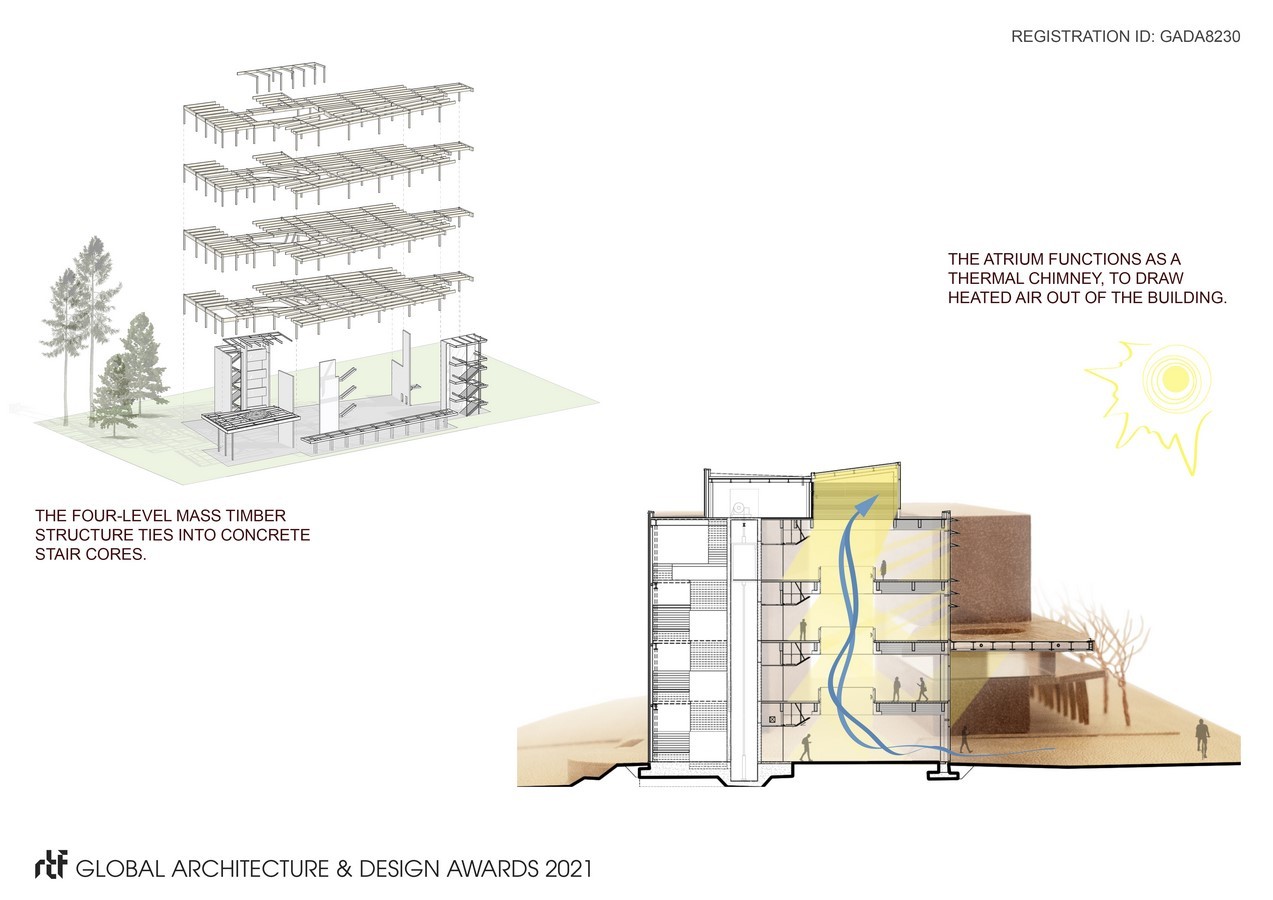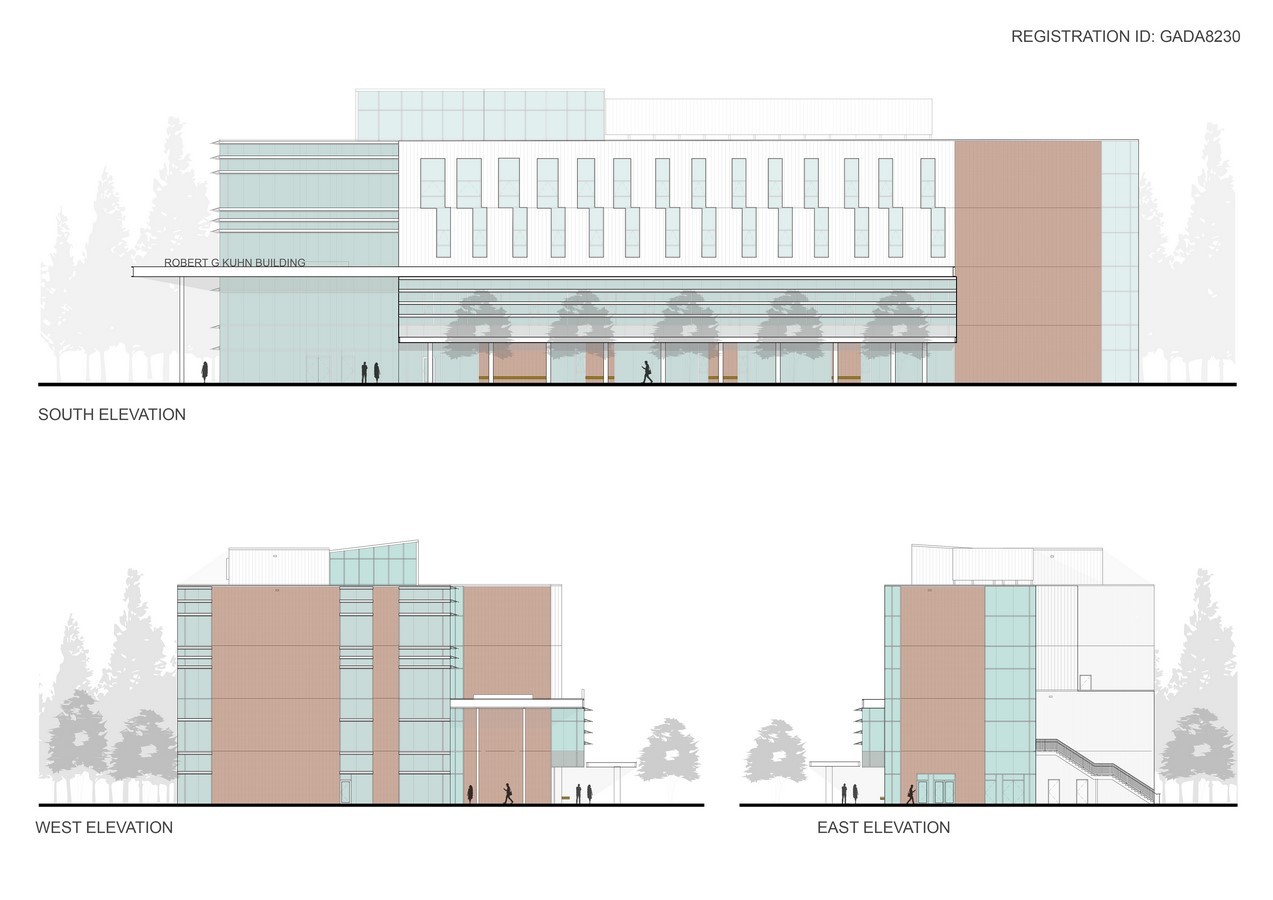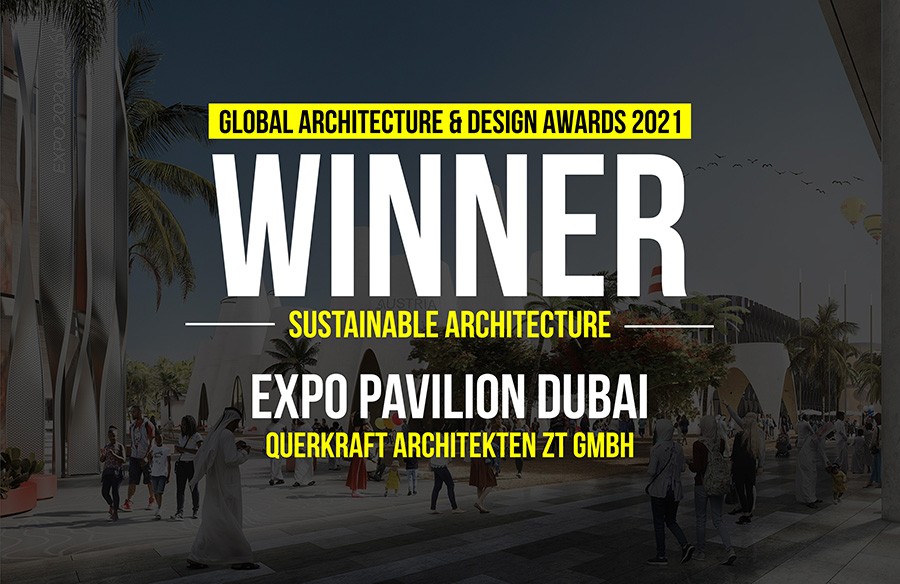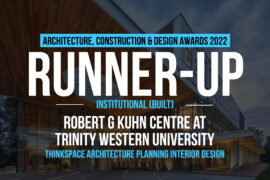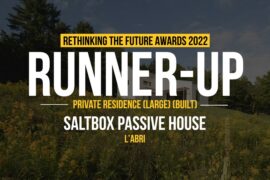The Robert G. Kuhn Building at Trinity Western University (TWU) will be the new home of the university’s school of business and TWU GLOBAL, an international and online degree program. As an established post-secondary institution, TWU wanted a new gateway building that would define the campus entry and set the standard for future teaching and learning spaces.
Global Design & Architecture Design Awards 2021
Second Award | Category: Institutional (Concept)
Project Name: Robert G. Kuhn Building at Trinity Western University
Project Category: Institutional
Studio Name: Thinkspace Architecture® Planning Interior Design
Design Team: Ray Wolfe, Mandy Yan, Wentao Zhou, Dayna Wlasoff, Vina Nguyen, Ashley McRae
Area: Canada
Year: 2021 (September occupancy)
Location: Langley, British Columbia, Canada
Consultants: Structural – Entuitive; Mechanical – Smith + Anderson (Vancouver); Electrical – Smith + Anderson (Vancouver); Code – Pontem Group; Acoustic – BKL Consultants Ltd.; Civil – H.Y. Engineering Ltd.; Geotech – JECTH Consultants Inc.
Photography Credits: Renderings © Thinkspace
Text Credits: Text © Thinkspace
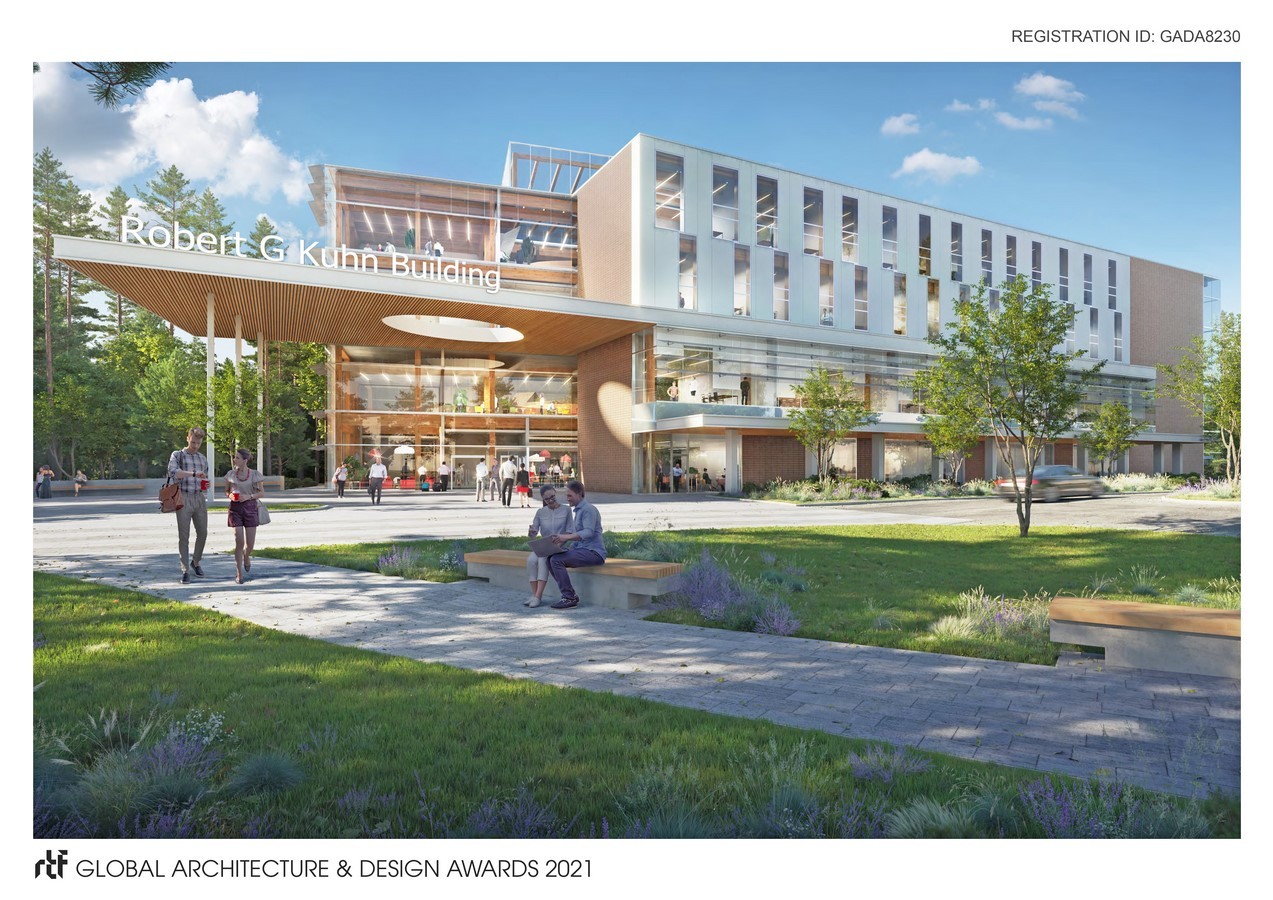
The solution that emerged out of vision and needs sessions was a light-filled, four-storey mass timber structure with a mix of formal and informal learning spaces to accommodate an ever-evolving student population.
The building, which is the first major project on campus in nearly 40 years, is set to be a landmark, both from the adjacent Trans-Canada highway and upon entering the campus in this largely rural city an hour east of Vancouver. It will transform the institution into a top-tier business school, and serve as a precedent for subsequent on-campus developments.

Fronting the main campus entry, the design premise rests on engaging the street edge while maintaining a connection through to the campus quad. An exterior planning node and large canopy with an opening above the entrance define the organization of the building, as well as the programmatic relationships to the site and the building’s interior.
Upon entering the building, a four-storey ovalized central atrium organizes the program, with learning spaces – both traditional and informal – adjacent to the atrium. All programmed areas take advantage of natural light and views out to the campus to support the health and well-being of occupants.

Mass timber was intentionally chosen as the primary structural material, as it delivers an economical structure, expedited construction, and reduced embodied carbon. It also facilitates clear spans that are desirable in a flexible learning environment, and promotes biophilia and warmth.
Concrete stair cores that exceed the current building code support the timber super-structure; steel-to-wood connections use encapsulation to meet fire ratings. The structure and detailing will serve as a prototype for future mass timber structures in Western Canada.
Passive sustainability strategies such as daylighting, a highly efficient envelope, and a thermal chimney created by the atrium are all part of the design, while the use of locally-sourced timber reduces the project’s carbon footprint. Active strategies include a mechanical system based on zoned roof-top units supported by heat pumps, and the heat recovery system offered by the interconnected atrium. Custom-designed solar shades are carefully placed to reduce both glare and heat gain.
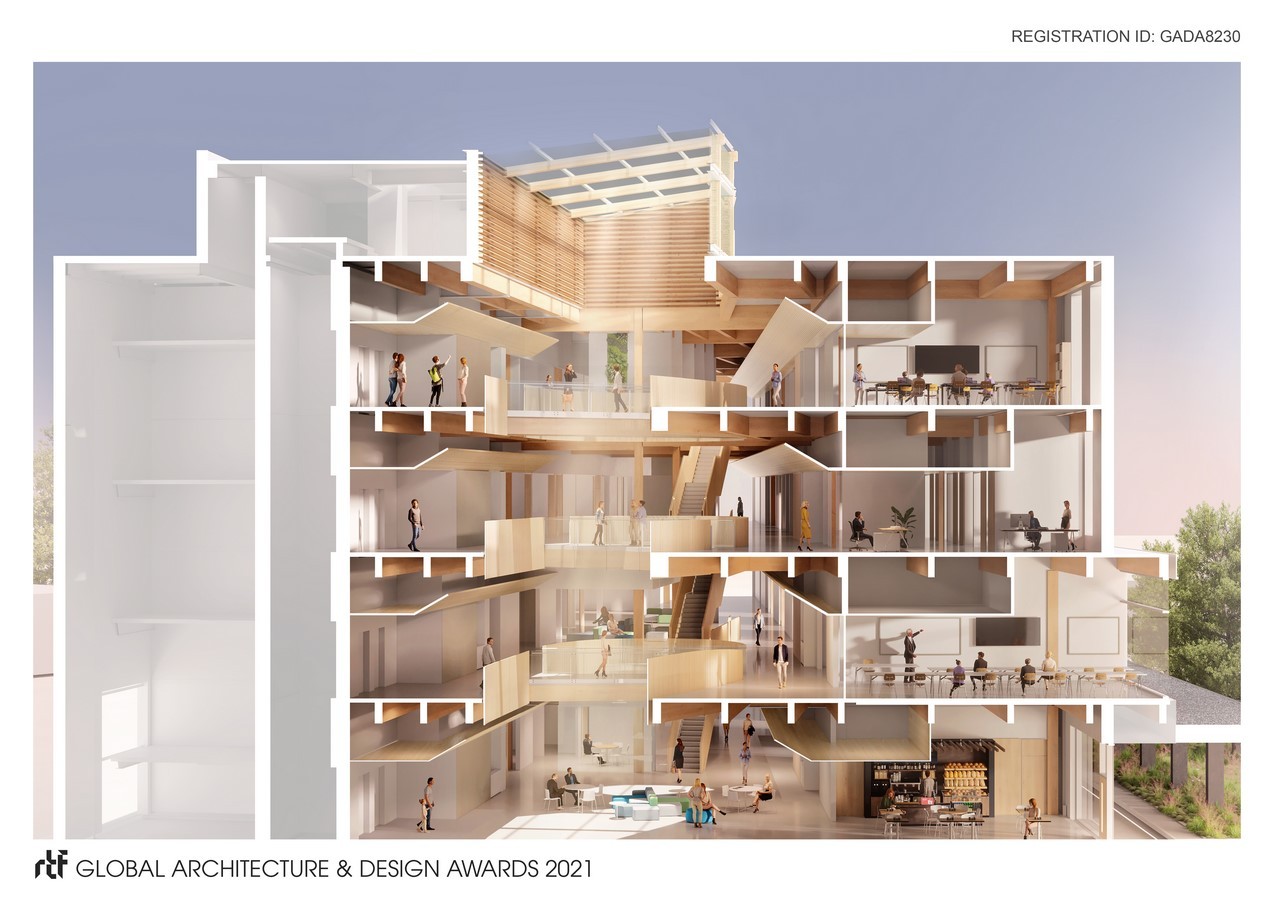
On the exterior, the use of brick cladding respects other brick buildings on campus while the choice of lighter colours updates the aesthetic. Concentrations of curtain wall will create transparency and allow for connections through the campus quad to the atrium. The use of wood across the soffits will bring an added sense of warmth that invites users into the space.
This innovative building will serve as an inspiration for the mass timber and institutional design communities, as well as a testament to progressive thinking from an institution intent on solidifying its credentials in the world of academia.


